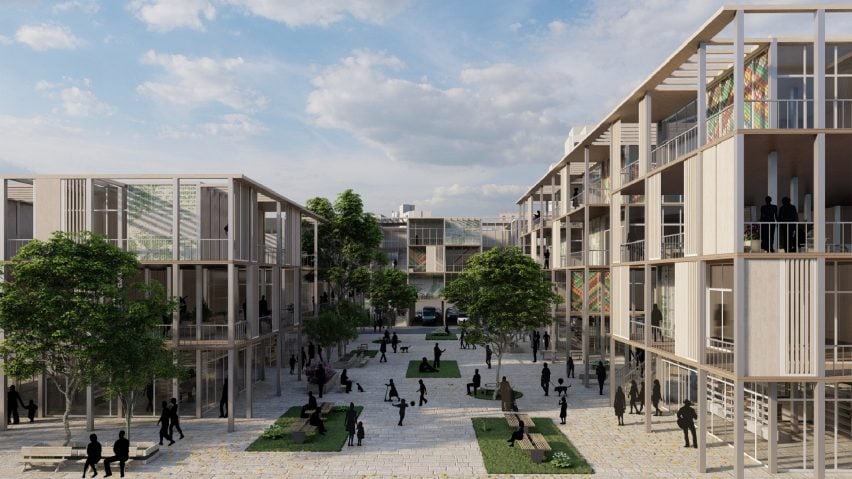
Ten interior and spatial design projects by students at University of Pécs
Dezeen School Shows: a children's centre featuring a playground and learning spaces is included in Dezeen's latest school show by the University of Pécs.
Also included is mixed-use complex with moveable features and a project exploring weaving within architecture as a sustainable pracitce.
University of Pécs
Institution: University of Pécs
School: Faculty of Engieering and IT, Institute of Architecture
Course: Interior and Spatial Design MA
Tutors: Prof Dr Ágnes Borsos DLA habil, Prof Dr Gabriella Medvegy DLA habil, Dr Donát Rétfalvi DLA habil, Sarolta Jurdik DLA, Nicolas Ramos Gonzalez DLA, Tamás Rácz DLA, Nicolas Ramos Gonzalez DLA and David Ojo
School statement:
"This programme creates interior design artists who, in liaison with architects and other design professionals, are capable of solving issues regarding aesthetic, functional and psychological aspects of a given space or spaces and in the course of forming architectural space, are capable of preserving the conceptual unity of interior elements and furnishings.
"Those graduating the programme will be instilled with essential technical knowledge and artistic talent, have an understanding and thorough knowledge of creativity and the design process.
"Graduates will acquire an advanced sense of aesthetic and critical talents, developed aesthetic taste, have an exhaustive knowledge of interior design terminology, traditional and innovative materials as well as the technology and tools utilised in their production.
"Students will be taught primary manufacturing and production processes and their conditions, and taking into consideration the physical, biological and cultural aspects, will be capable of conscious treatment of space and sense of space.
"They become conscious of the context of complex creative processes; not only will they receive the requisite knowledge for coordination of different disciplines but will also gain experience with the properties and techniques of processing specific materials.
"Using their acquired capacity for shaping space in a systematic manner integral to the design, they are able to react to new challenges in situations requiring complex and collective solutions.
"Qualified interior design artists are expected to be able to be aware of multifaceted professional issues, develop their own individual design and creative programmes and conduct their work autonomously, as well as to employ the necessary tools, methods, procedures and technologies proficiently and in novel ways in the creation of their own concepts and designs."
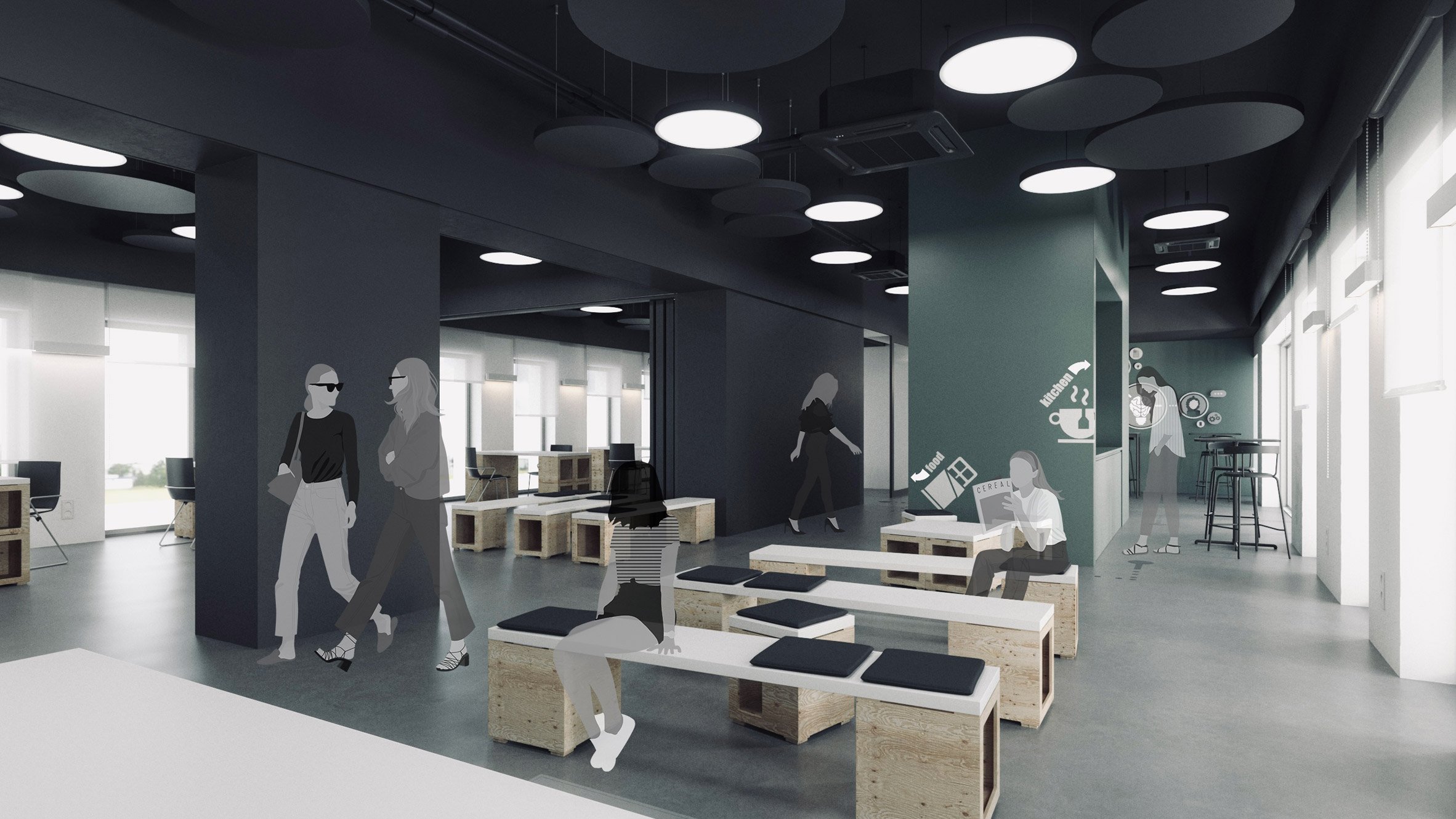
Up Science and Innovation Park by Dalma, Lovig, Sarolta and Jurdik
"A key aspect of the design of the PTE Science and Innovation Park was to support interaction from the initial design phase through to the ongoing use of the spaces created.
"The task was to create innovative workspaces for ten different working groups in two existing buildings.
"The result is a complex of buildings that provides a suitable backdrop for research, knowledge exchange and innovation on campus."
Students: Dalma, Lovig, Sarolta and Jurdik
Course: Interior and Spatial Design MA
Tutors: Prof Dr Ágnes Borsos DLA habil, Prof Dr Gabriella Medvegy DLA habil, Prof Dr Bálint Bachmann DLA habil and Dr Balázs Kokas DLA
Emails: lovig.dalma[at]mik.pte.hu and jurdik.sarolta[at]mik.pte.hu
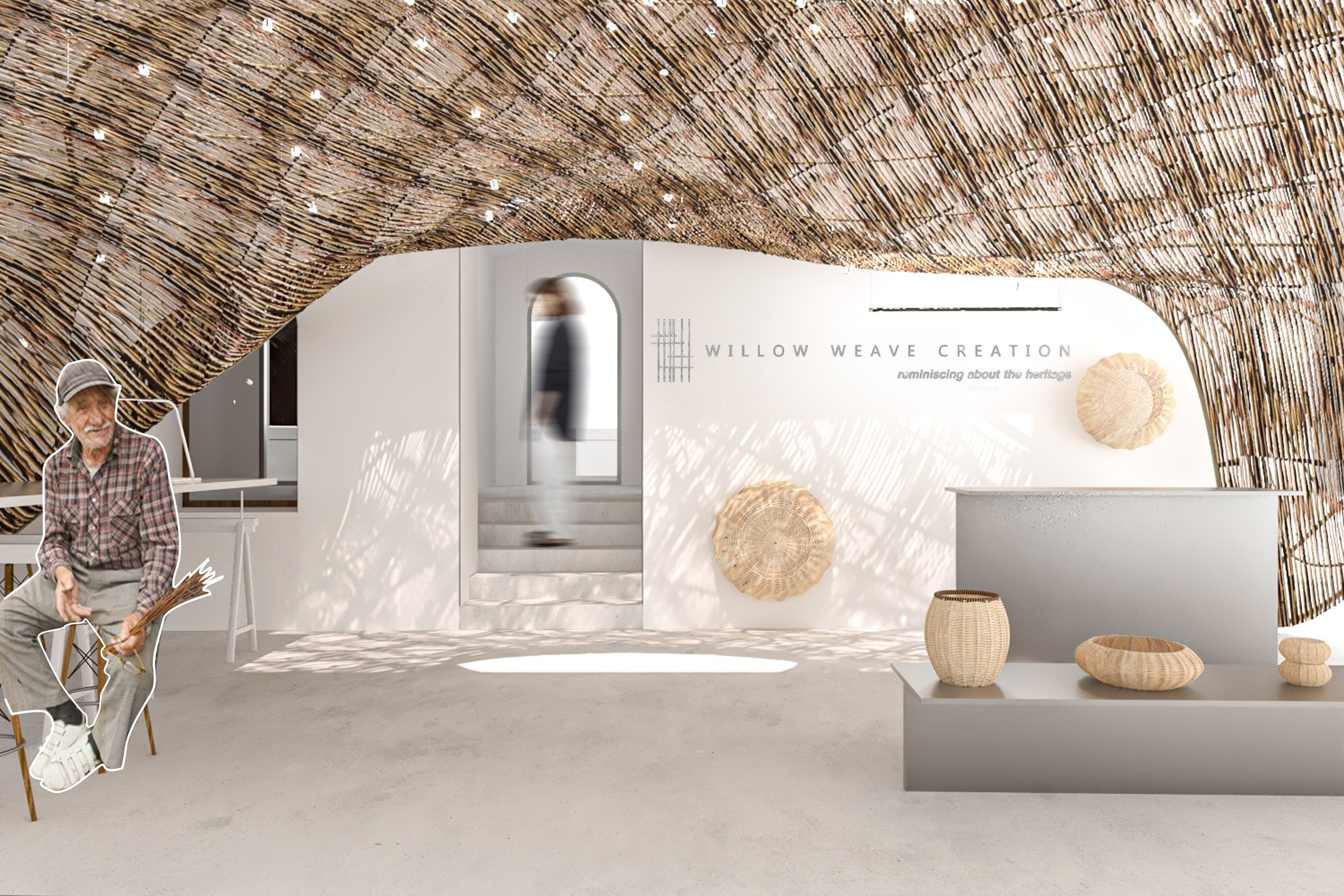
Willow Weave Creation, Atelier Shop by Ezgi Su Demirci
"The Roma population in eastern Europe represents a diverse and resilient community with a rich cultural heritage, but one that continues to face significant social, economic and political challenges throughout the years – Romani people have been exposed to discrimination and social exclusion and become a controversial topic specifically after the fall of communism.
"Besides that, this segregation in society generates urban gentrification on the Romani people's right to the city across. This urban problem can also lead to a lack of educational opportunities among Romani communities.
"The purpose of this study is to examine the practice of willow weaving, an old traditional cultural craft that belongs to the Romani people, exploring its potential future applications within both urban and architectural contexts; research questions revolve around the sustainability of materials used in willow weaving for its cost-effectiveness and the potential for its contribution to increasing employment rates where Romani communities are in the majority."
Student: Ezgi Su Demirci
Course: Interior and Spatial Design MA
Tutors: Prof Dr Ágnes Borsos DLA habil, Dr Donát Rétfalvi DLA habil and Dr Tamás Rácz DLA
Email: ezgisu.demirci[at]hotmail.com
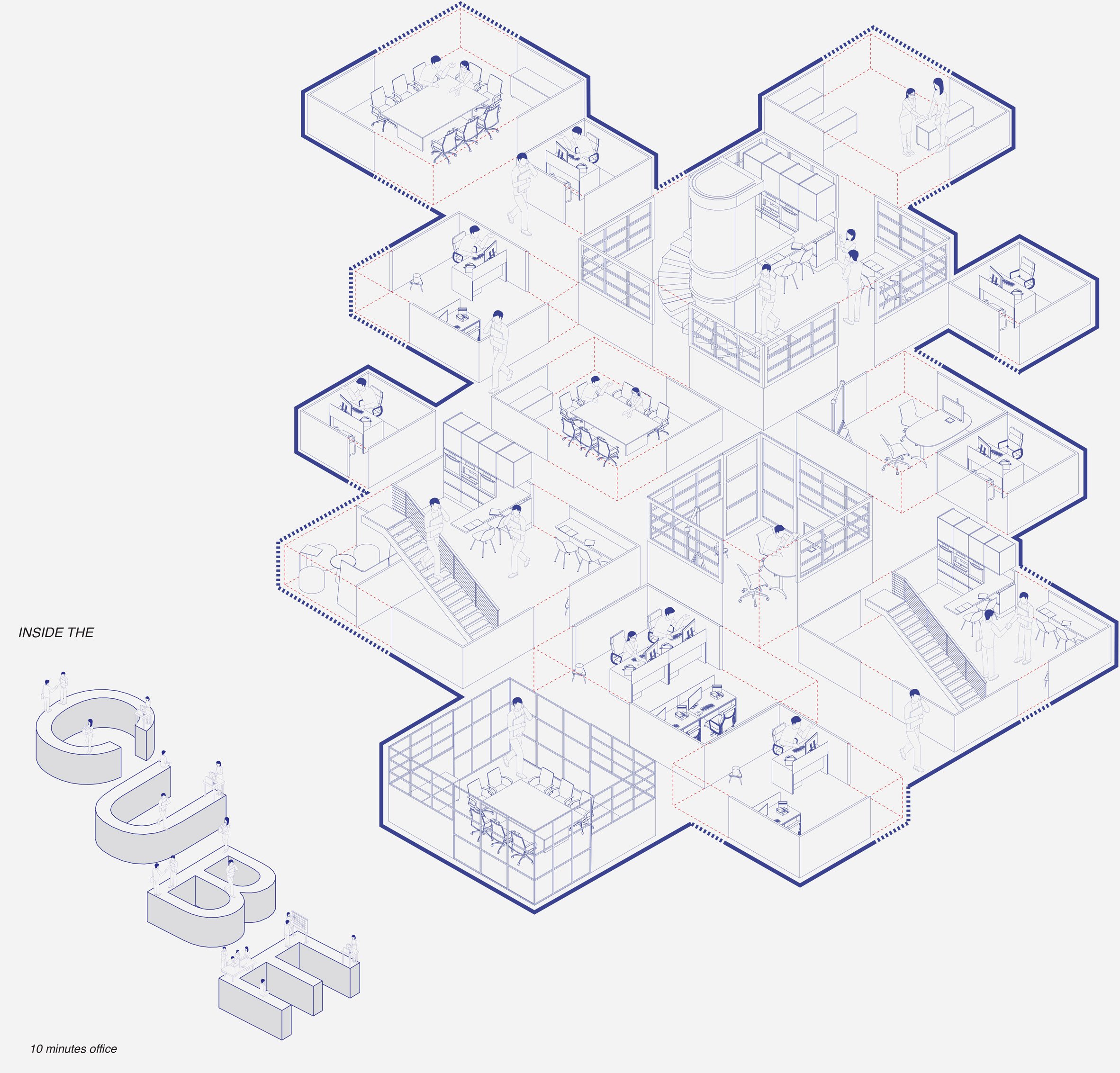
The Cube by Ezgi Su Demirci, Fariha Afzal and Antonella Giulia Masanotti
"Maximising productivity while supporting health levels are two prominent issues that occupy designers in office design.
"Throughout history we have seen a constant evolution of ideal office space – what started as a 5.9-square-metre cubicle turned into an open layout to tackle employees' health and social needs.
"While the social aspect was met, it gave way to other issues such as noise, concentration, privacy and the feeling of being watched.
"By breaking the cube apart we can explore different ways that it can serve its purpose in an office function – how it can create an open layout and keep privacy intact, and how it promotes the idea of socialisation between colleagues, creating a more holistic, interactive and healthy environment."
Students: Ezgi Su Demirci, Fariha Afzal and Antonella Giulia Masanotti
Course: Interior and Spatial Design MA
Tutor: Prof Dr Ágnes Borsos DLA habil
Email: ezgisu.demirci[at]hotmail.com
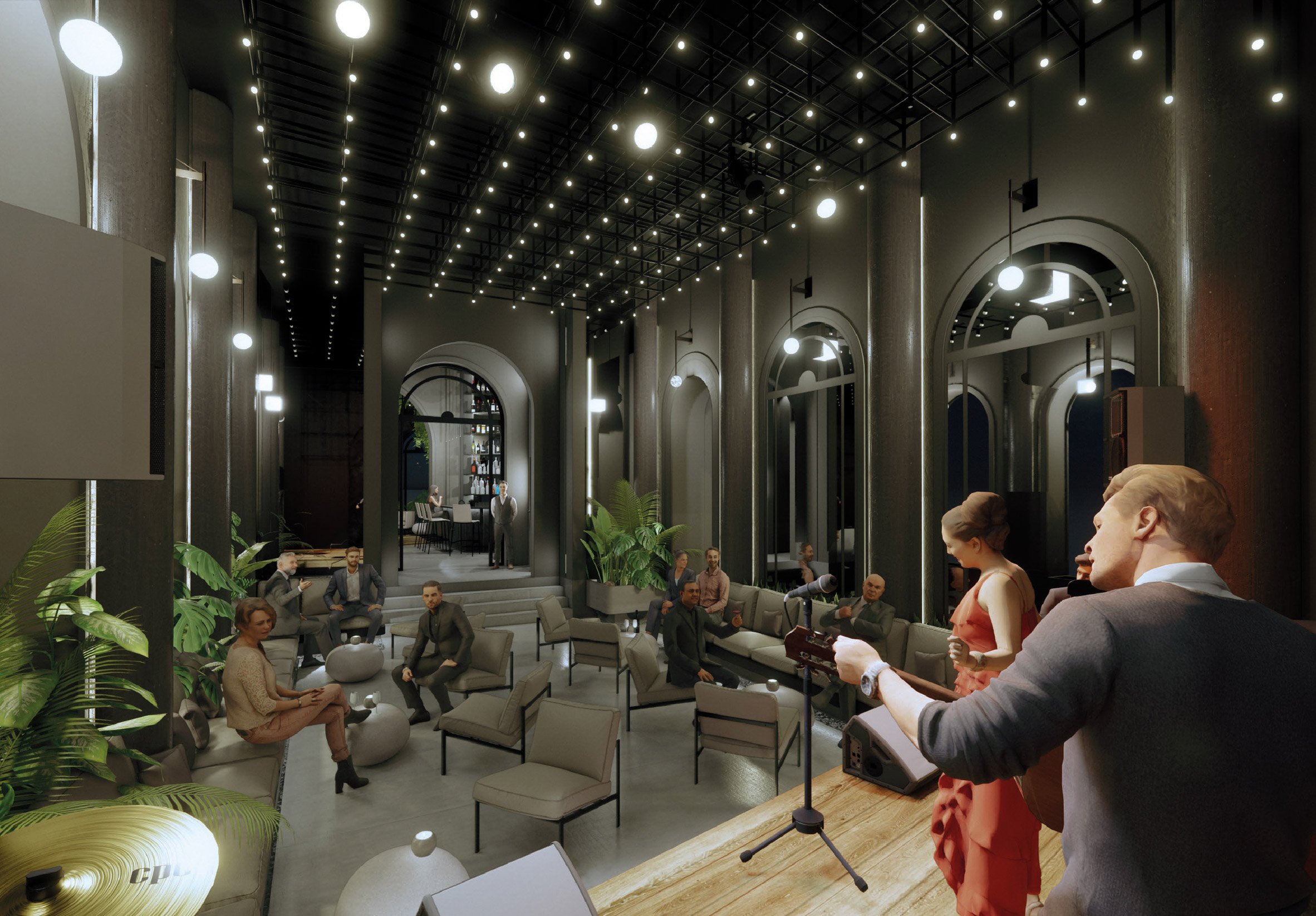
Jazz Garden by Fanni Júlia Török
"Pécs is proud to have been awarded the title of European Capital of Culture in 2010, but I think that jazz, as one of the noblest genres of musical culture, deserves its own unit where jazz musicians of Pécs can develop.
"The concept is based on three pillars: the specificity and nature of the building, the nature of my parents' jazz club and jazz as a function.
"I am more interested in the idea of jazz as a genre and in the freedom, sophistication, complexity and harmony in the dissonances, whilst incorporating characteristics of my parents' jazz club that I would like to carry forward: a starry sky, dressed in some kind of stylised, abstract robe, in a way that would be in harmony with the stage, using visual methods to create the motto 'the place where the stars are not only seen but also heard'."
Student: Fanni Júlia Török
Course: Interior and Spatial Design MA
Tutor: Prof Dr Ágnes Borsos DLA habil
Email: torok.fannyi[at]gmail.com
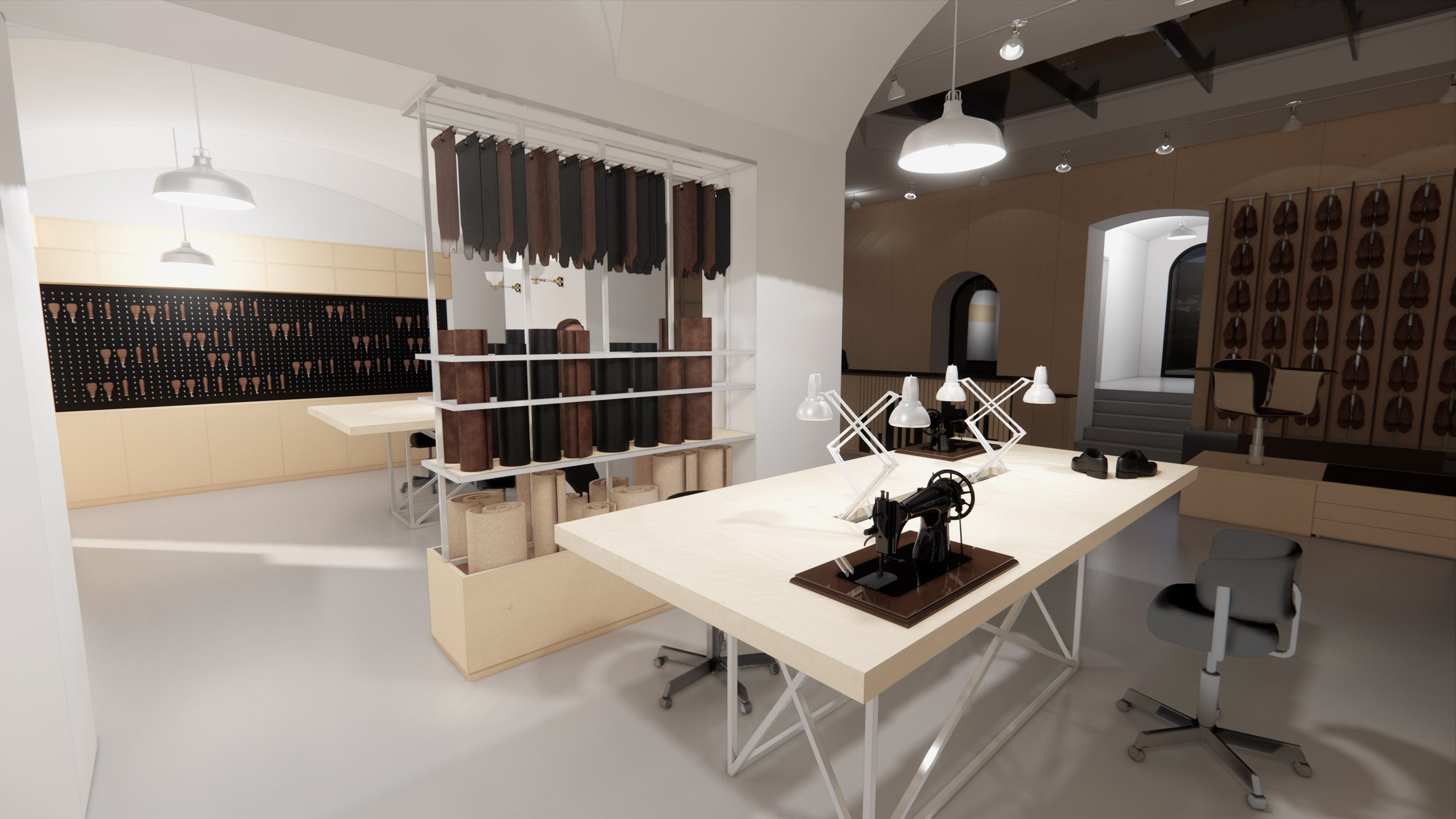
Shoemaking and Visual Workshop by Konrád Varga
"Nowadays, footwear is mass-produced and often feels disposable, a consequence of the so-called 'fast fashion'; this phenomenon entails the rapid buying and disposal of mass-produced clothing and footwear, characterised by a wide range of affordable prices and short product life cycles, coupled with a high value placed on the customer's impression. This results in significant waste and greenhouse gas emissions.
"Generation Y is identified as the primary consumer group, often criticised for not being as environmentally conscious, leading to frequent discarding of shoes and clothes eliminating possibilities of reuse. Clothes and shoes derived from fast fashion are seldom durable and typically discarded before their warranty expires, leading individuals to seek replacements.
"The easiest and least costly method is often to replace shoes under warranty, but when not feasible, new purchases are made. However, damaged shoes can be repaired by shoemakers or sewists, which is usually more affordable than buying new products and demonstrates the utility of various materials and products, thereby aiding the environment."
Student: Konrád Varga
Course: Interior and Spatial Design MA
Tutors: Prof Dr Ágnes Borsos DLA habil, Dr Donát Rétfalvi DLA habil and Dr Tamás Rácz DLA
Email: koni.varga[at]gmail.com
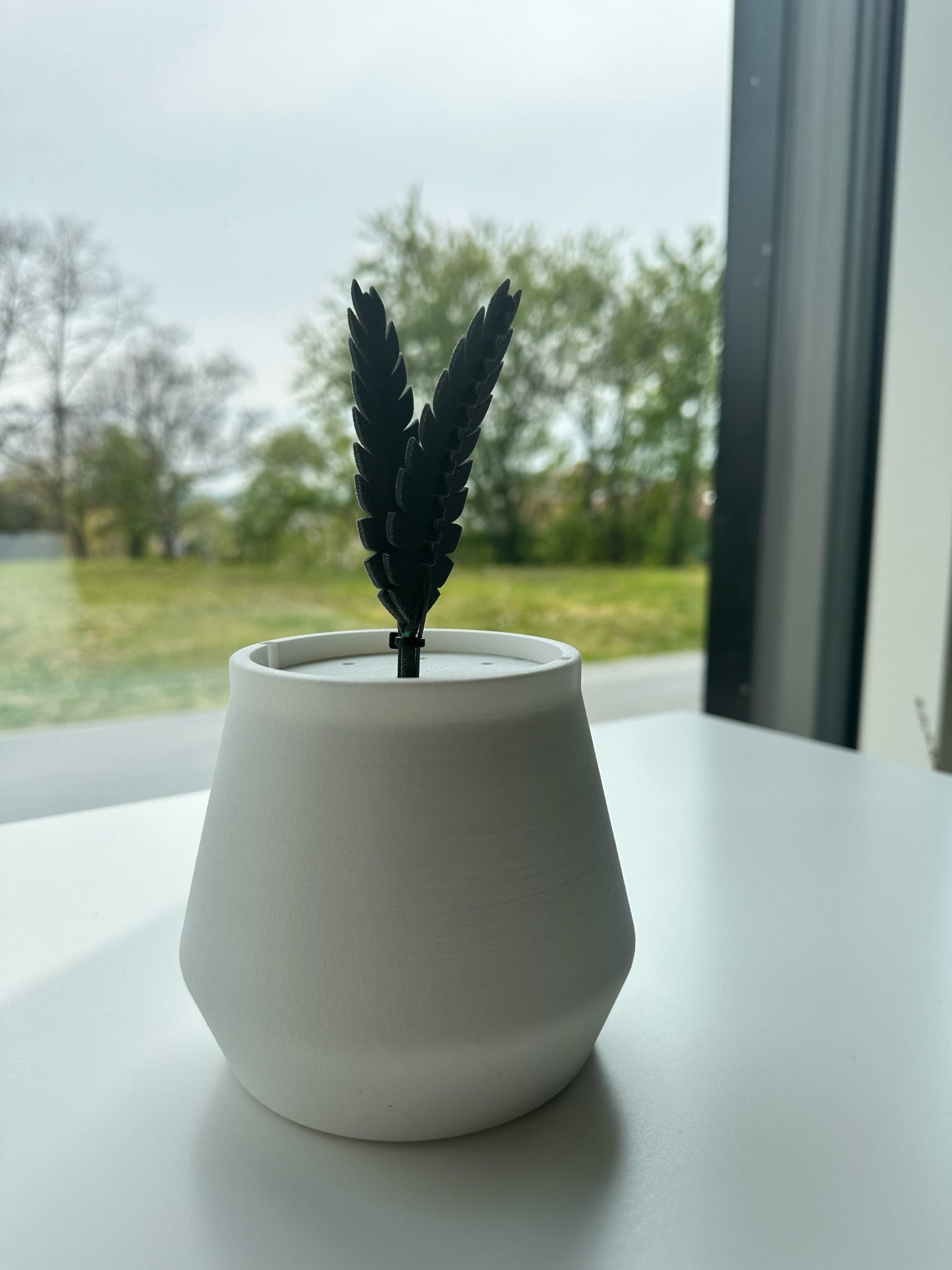
Mimosa, personal comfort parameter measuring device by Konrád Varga and Mahmoud Osman
"In the research conducted under the 'parameterised comfort in physical space' research group, a thermal comfort device was developed to measure basic human comfort parameters in an office environment – the device measures four essential indoor environmental quality (IEQ) parameters, influenced by employees' overall comfort and wellbeing.
"Based on a microcontroller with several sensors, the comfort measuring device collects data and displays it on a server and mobile application.
"Inspired by mimosa plants, the enclosure design allows the device to move like the plant to signal specific parameters."
Students: Konrád Varga and Mahmoud Osman
Course: Interior and Spatial Design MA
Tutor: Prof Dr Ágnes Borsos DLA habil
Email: [email protected] and [email protected]
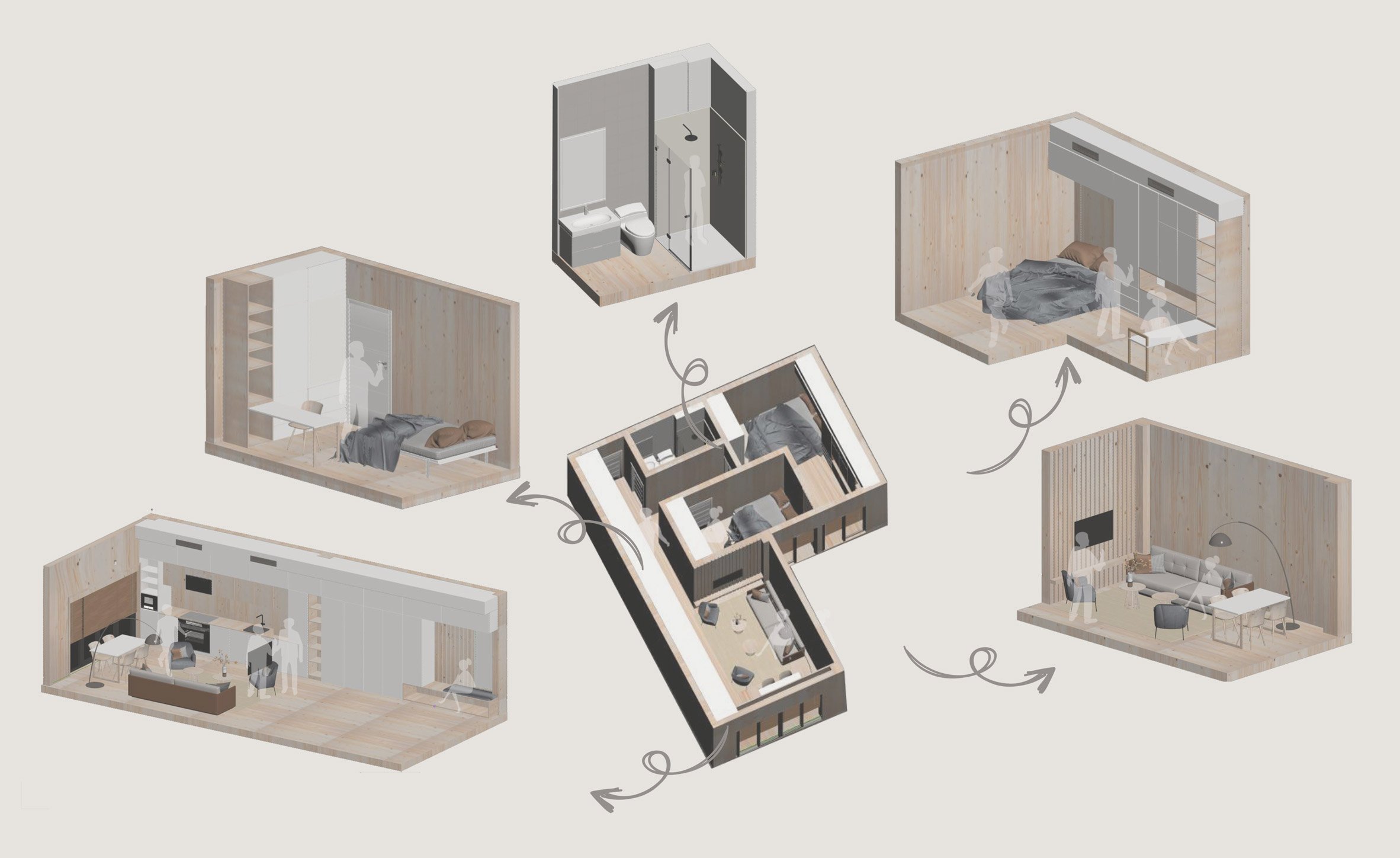
Mas Apartment Complex by Sara Ardalan Hussien, Gantumur Bujin Lkham and Lujain Ahmad Mohamadamen
"MAS Apartment complex is a project developed by students of the University of Pécs for the affordable housing project competition in Las Vegas, which got an honourable mention by Buildner Architecture Competitions.
"The concept was developed by choosing a target user, which are people between 18 to 28 years of age, who are beginning their independent life in Las Vegas.
"The aim in this project is to provide an affordable, efficient, functional space for the users – the name MAS stands for modular, affordable and sustainable."
Students: Sara Ardalan Hussien, Gantumur Bujin Lkham and Lujain Ahmad Mohamadamen
Course: Interior and Spatial Design MA
Tutors: Prof Dr Ágnes Borsos DLA habil and Dr Tamás Rácz DLA
Emails: sarabarzinjee[at]gmail.com, bujinlkham11[at]yahoo.com and luedlibi[at]gmail.com
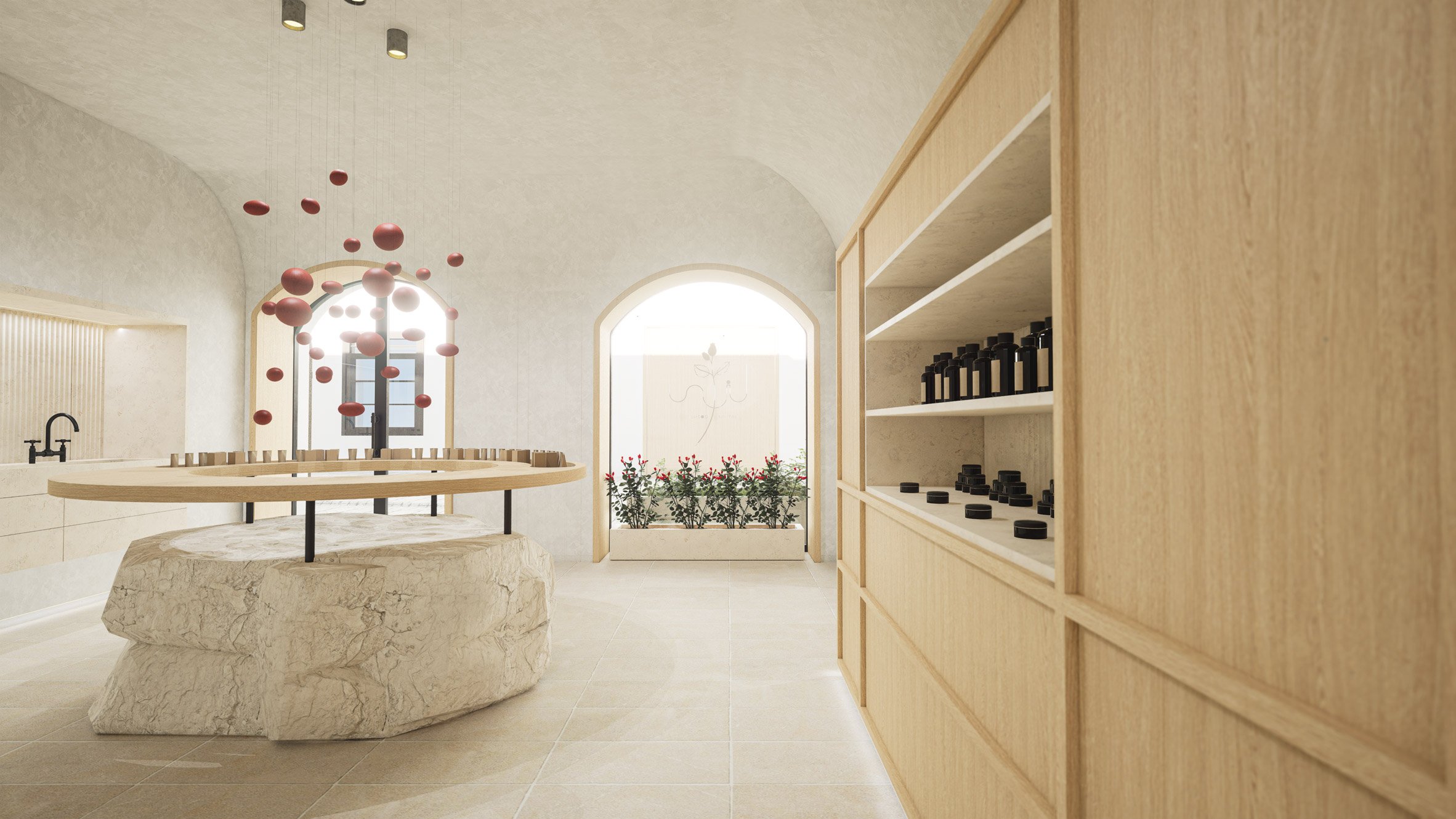
Natural Cosmetic Manufactory by Zsófia Bittnier
"In the historic heart of Pécs, the Natural Cosmetic Manufactory pays tribute to the city's craftsmanship legacy, intertwining health and naturalness.
"Emphasising the use of herbs and conscious skincare over artificial additives, the initiative promotes the broader use of natural cosmetics – locally made products are sold, advocating for a better standard of living.
"Strongly linked to Pécs, the manufactory draws inspiration from the regional rosehip, with limestone and natural oak from the Mecsek hills dominating the interior, highlighting local resources and traditions."
Student: Zsófia Bittnier
Course: Interior and Spatial Design MA
Tutors: Prof Dr Ágnes Borsos DLA habil, Dr Donát Rétfalvi DLA habil and Dr Tamás Rácz DLA
Email: bittnerzsofia[at]gmail.com
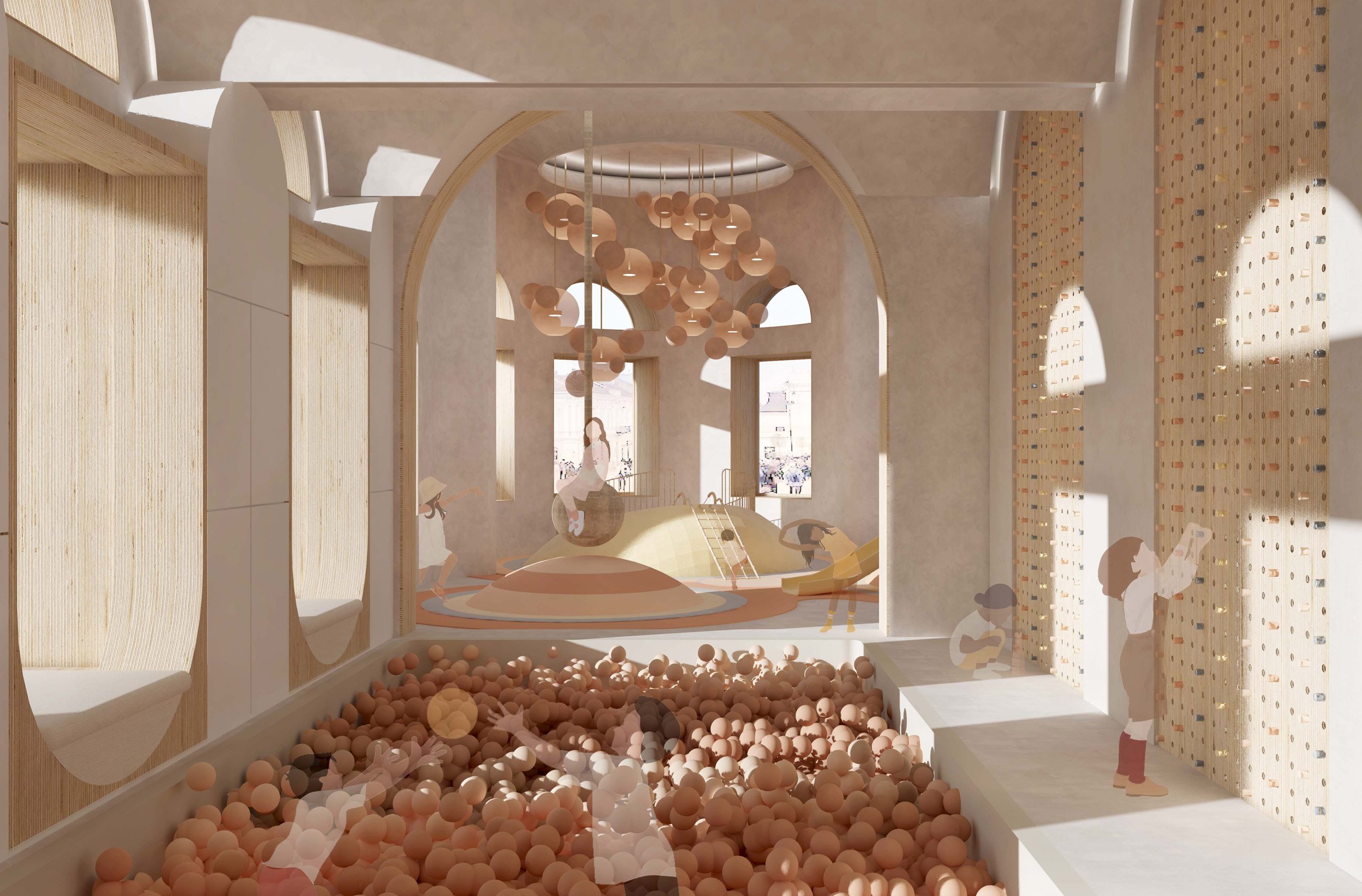
Childcare Centre by Lujain Ahmad Mohamadamen
"This childcare centre is designed to be a comprehensive support system for families, working parents, new parents and mothers experiencing depression or a lack of childcare experience, whilst also supporting the social, mental and physical development of children, operating a dual-shift system to meet the diverse needs of the community.
"Flexibility and modularity are the key aspects of this project, ensuring smooth transitions between shifts and adaptable programming to cater to the dynamic needs of families.
"The space is designed with these principles in mind, divided into four zones that function as a cycle, ensuring each zone is easily accessible from the main entrance."
Student: Lujain Ahmad Mohamadamen
Course: Interior and Spatial Design MA
Tutors: Prof Dr Ágnes Borsos DLA habil and Dr Donát Rétfalvi DLA habil
Email: luedlibi[at]gmail.com
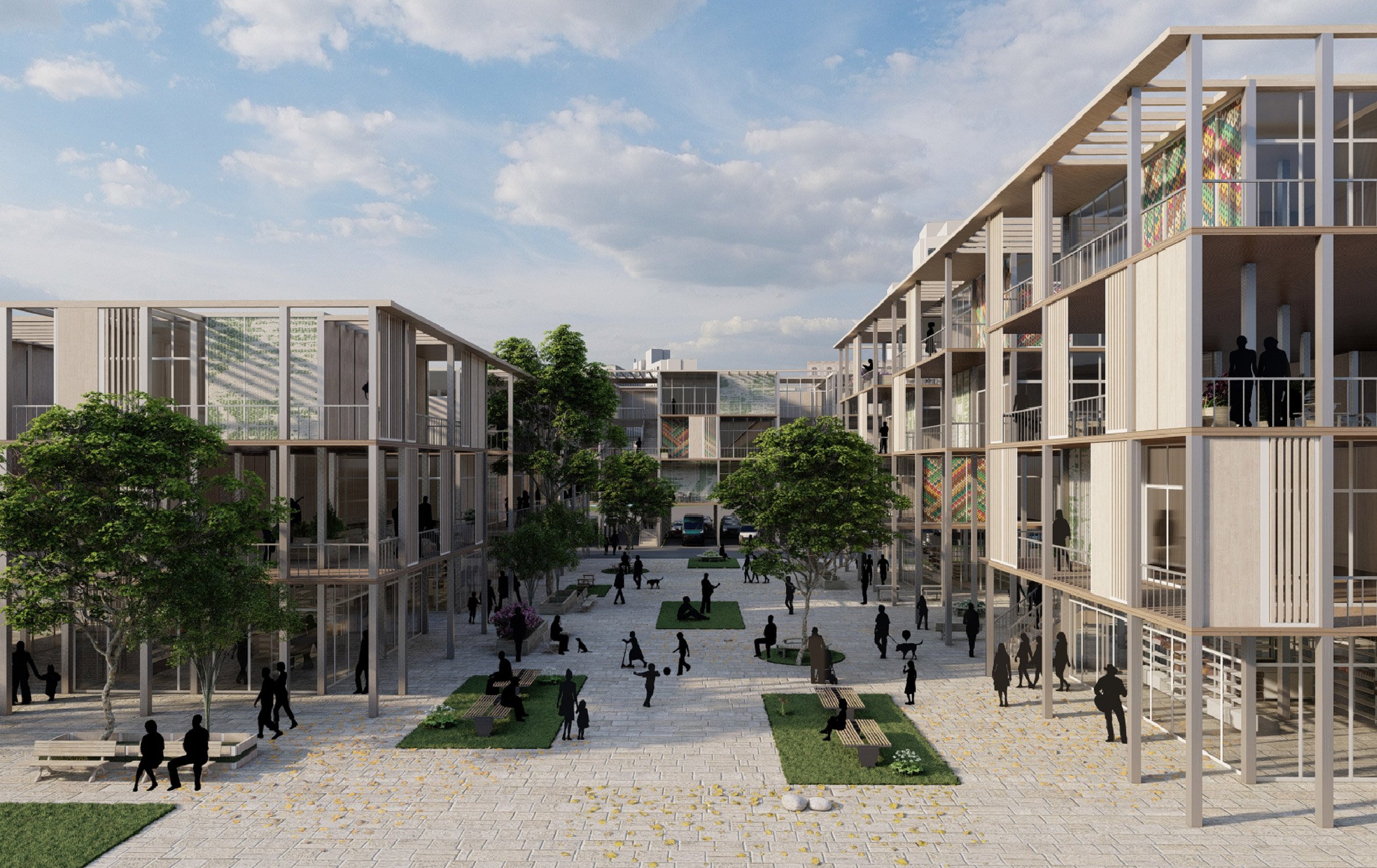
ModuLA by Natalia Zoe and Zambrano Bravo
"ModuLA prioritises adaptability and flexibility through versatile modules catering three key scenarios: addressing urgent needs for people living in vehicles providing services, maximising shared resources and ensuring sustainability, swift assembly and easy mobility in a housing system through a phased construction approach.
"It provides modules accommodating diverse arrangements to suit different types of residents, common areas and community spaces.
"The project includes shared community spaces for residents to be engaged with outdoor activities and commercial spaces to help generate additional income, enhance liveability and create a mixed-use environment connecting the residents with the surrounding area.
"Each housing unit features movable panels, allowing residents to dynamically customise their living spaces."
Students: Natalia Zoe and Zambrano Bravo
Course: Interior and Spatial Design MA
Tutor: Prof Dr Ágnes Borsos DLA habil
Email: nz.zb[at]hotmail.com
Partnership content
This school show is a partnership between Dezeen and the University of Pécs. Find out more about Dezeen partnership content here.